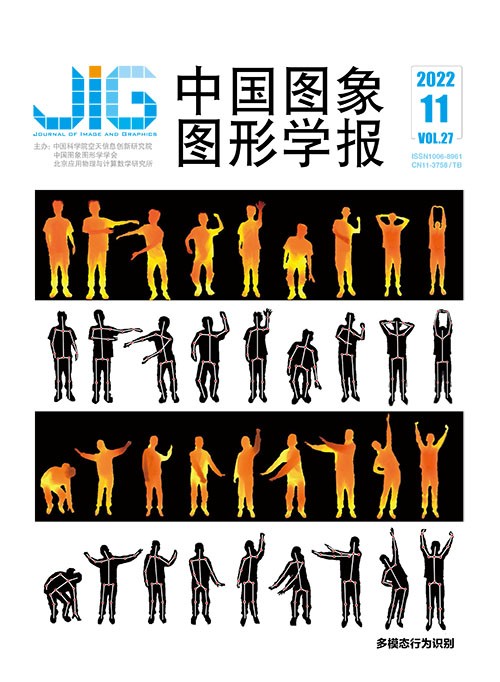
肺腺癌CT影像分子分型研究进展
摘 要
研究表明在明确驱动基因后进行特异性靶向治疗,肺癌患者的中位生存期显著延长。而除高通量测序技术和荧光原位杂交等分子生物学技术外,影像基因组学的出现,也为肺腺癌分子分型预测提供了一种无创的新方法。本文对肺腺癌计算机断层扫描(computed tomography,CT)影像分子分型的研究进展进行综述。首先,介绍肺腺癌分子分型的研究背景及肺腺癌主要的基因突变类型;然后,重点介绍两种主要的研究方法,即CT语义特征与肺腺癌分子亚型的相关性分析和基于机器学习的肺腺癌分子分型预测模型;最后,总结了该领域现阶段面临的主要问题,并对未来的研究方向做出展望。肺腺癌CT影像分子分型研究已经取得了一定成果,但仍存在很多问题。相关性分析与基于影像组学的预测模型研究由于样本各异且受过多人为干预,导致研究结果差异大,甚至有部分文献得到的结论截然相反。而基于深度学习的预测模型研究采用端到端的神经网络模型,人为参与极少,降低了研究难度,但尚处于起步阶段,构建的模型大多相对简单,远不能达到临床应用标准。今后的研究应聚焦于结合多种医学图像构建肺腺癌分子分型的大样本深度学习预测模型,同时结合临床信息、语义特征及影像组学特征,实现肺腺癌分子分型的无创、精准预测。
关键词
Review of CT images-based molecular typing for lung adenocarcinoma
Bu Ju1, Nie Shengdong1, Wei Long2(1.School of Medical Instrument and Food Engineering, University of Shanghai for Science and Technology, Shanghai 200093, China;2.School of Computer Science and Technology, Shandong Jianzhu University, Jinan 250101, China) Abstract
The lung adenocarcinoma oriented median survival intervals can be significantly extended through specific targeted therapy based on the identified gene-driven following. Current biopsy is regarded as the "gold standard" for gene-driven tumor detection in clinical practice. Such invasive examination has a certain probability of misdiagnosis and missed diagnosis due to the tumor heterogeneity. Moreover, some of the molecular biology detection technologies are time-consuming and costly, such as the next generation of sequencing and fluorescence in situ hybridization. Therefore, radiogenomics has emerged and provided a new non-invasive method for the prediction of tumor molecular typing. As the most commonly-used way to monitor the lung cancer-related curative effect, computed tomography (CT) has its potential of short-term scanning, high resolution and relatively low-cost, which can carry out the tumor evaluation overall. It makes up the deficiency of biopsy to a certain extent. Thanks to the development of molecular targeted drugs in the context of lung adenocarcinoma treatment, most of researchers have been committed to using medical images to predict the molecular typing of lung adenocarcinoma. We carry out the critical review to harness CT images based molecular typing of lung adenocarcinoma. 1) Current situation of lung adenocarcinoma-oriented molecular typing and the key gene mutation types are introduced. 2) Existing CT images-related methods are divided into two categories:the correlation analysis of CT semantic features and the molecular subtype of lung adenocarcinoma, and the prediction model of molecular typing based on machine learning (ML). Among them, the ML-based prediction model is mainly introduced, which includes radiomics model and deep learning neural network model. 3) Some challenging problems are summarized in this field, and the future research direction is predicted. The correlation between semantic features and molecular typing of lung adenocarcinoma is derived of naked eyes visible tumor features. But, the predicted accuracy is still relatively low. Furthermore, the prediction model is demonstrated based on extracted features of radiomics from the segmented tumor images, and the selected radiomics features are input into the machine learning classifier to obtain the final prediction results. This method is still subject to human subjective influence to some extent, such as the stage of tumor segmentation and pre-setting features. To extract higher-level features for higher prediction accuracy, the convolutional neural network based (CNN-based) deep learning technology can beneficial for low-level features learning in tumor images. The deep learning model has less human-derived intervention, but it needs to be trained and verified through a large amount of data, and the expected effect cannot be achieved temporarily via a small sample. A challenging issue is to be tackled for the complex status of genetic mutations in lung adenocarcinoma and a complete and standardized database for generalization ability. With the database development of gradual standardization and expansion, future research direction can be focused on the construction of large-sample deep learning prediction model based on the integration of multiple medical images. To achieve noninvasive and accurate prediction of molecular typing of lung adenocarcinoma, the model optimization should combine clinical information, CT semantic features and radiomics features further.
Keywords
|



 中国图象图形学报 │ 京ICP备05080539号-4 │ 本系统由
中国图象图形学报 │ 京ICP备05080539号-4 │ 本系统由